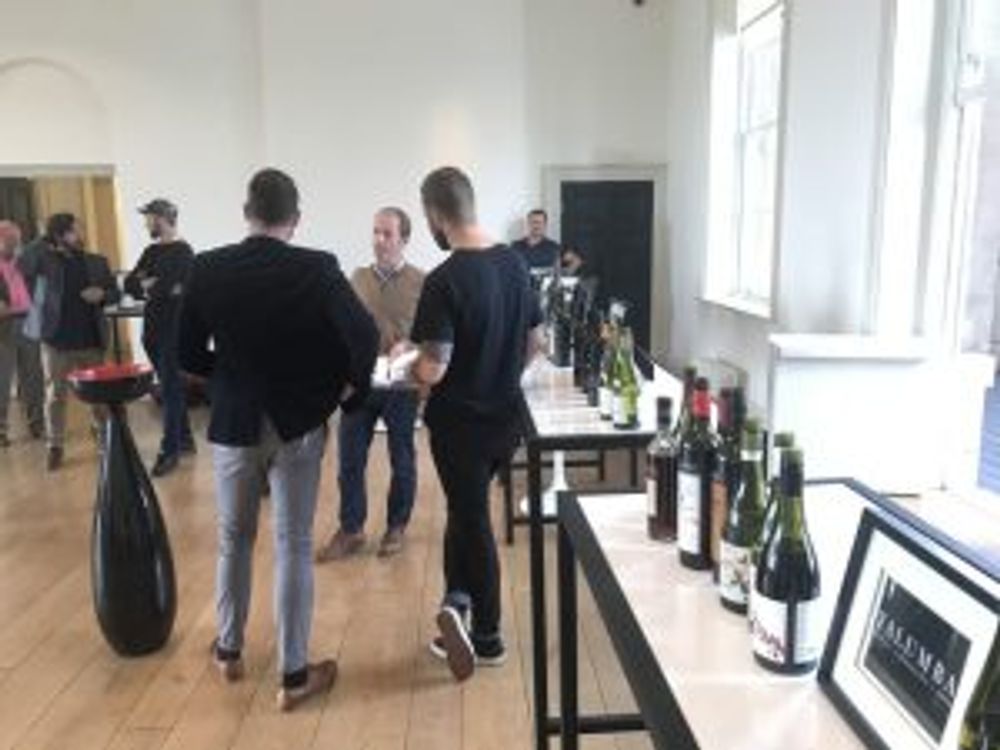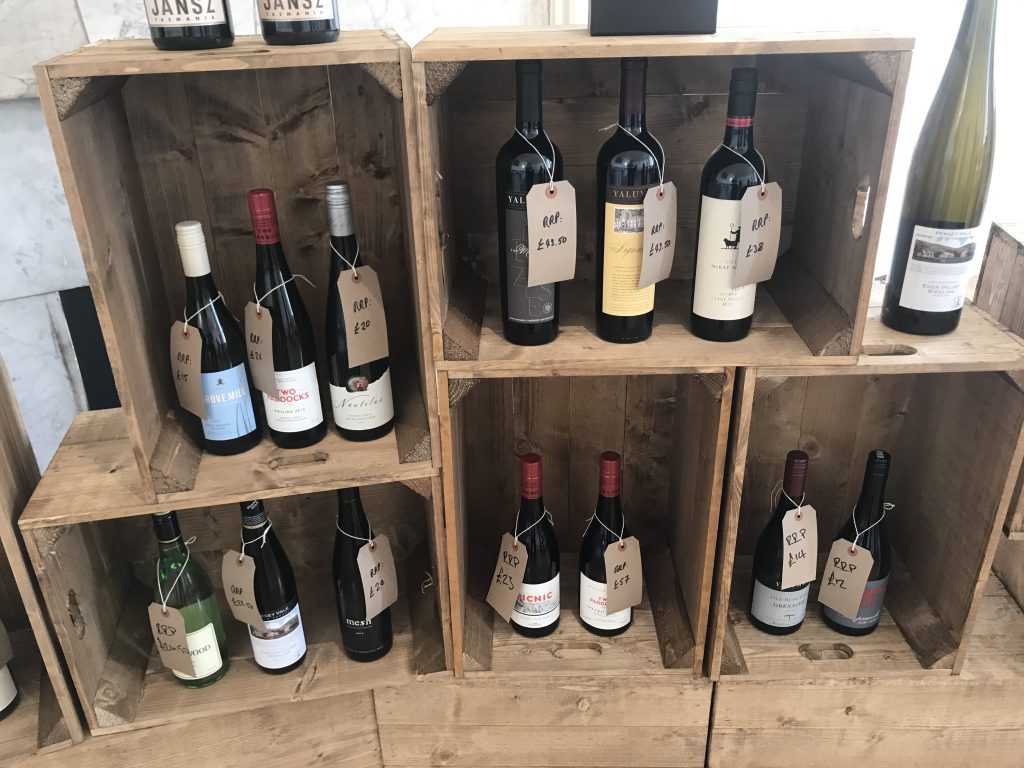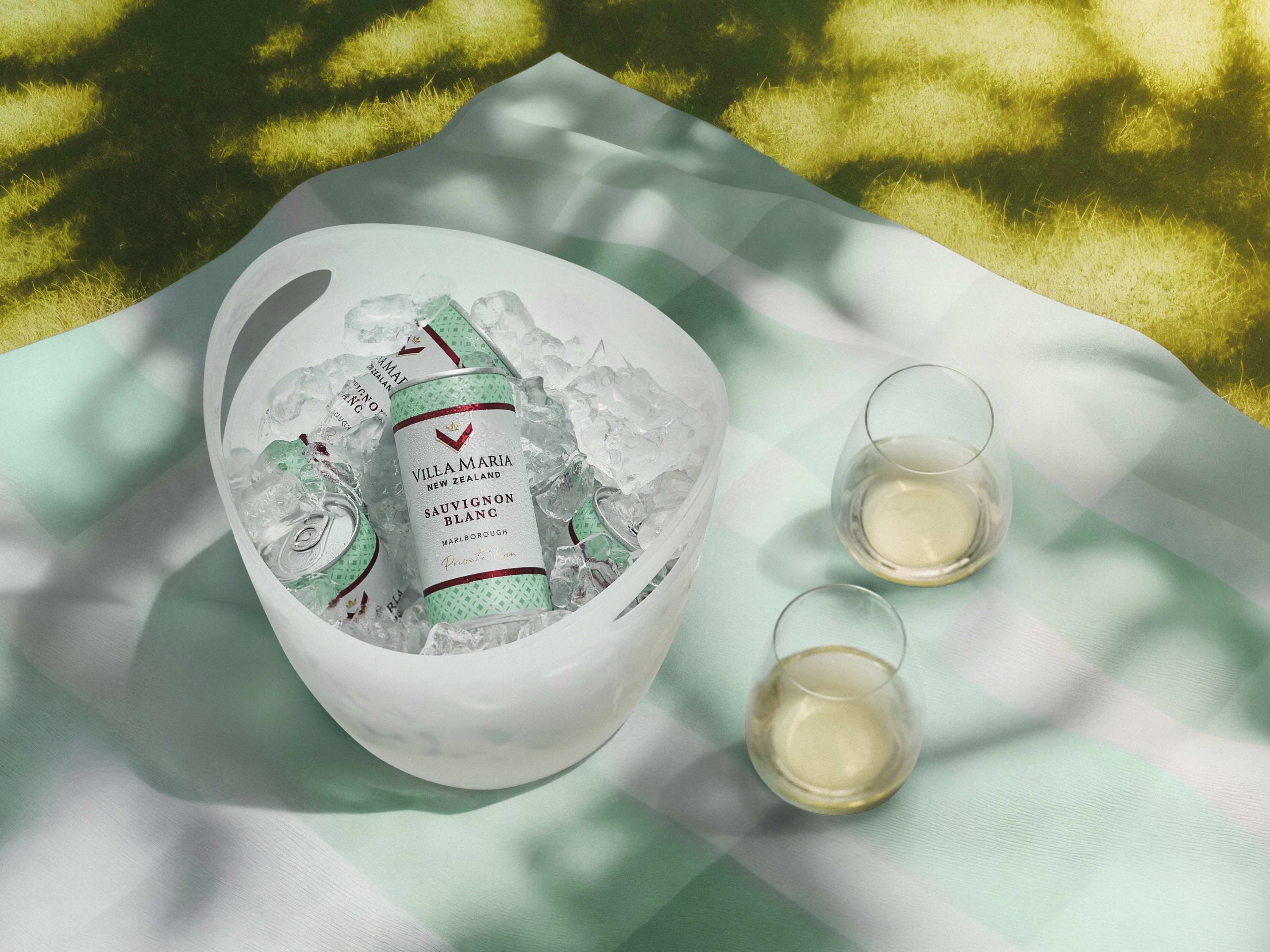Key past and present stars of the Negociants portfolio were highlighted in a Masterclass held by Simon Thorpe; many winemakers have been changing their style; while six wines shone out as being fascinating wines of the tasting.
Arriving at a Negociants tasting is, for me, like returning to old friends.
Of course, it’s always great to see the UK crew, but by ‘old friends’ I really mean the wines, many of which are familiar to me for more years than I would like to think about, back to when I was buying entry level Yalumba with my cousins to drink on the beach in Surfers Paradise.

The turnout seemed low but the high quality of the wines was beyond doubt
So I was a bit surprised to arrive at early September’s tasting at London’s stunning Somerset House – complete with a stunning view of the Thames – to find the tasting all but empty. Where were all the people?
Well, you just can’t predict the calendar but Negociants had inadvertently chosen the busiest day in the busiest month in the wine trade calendar to hold its tasting, competing with California just up the road at Westminster Gardens, Charles Taylor and OW Loeb‘s respective Autumn tastings, M&S’s Autumn tasting and Borough Wines’s 15th Anniversary Tasting.
But it really didn’t matter because the wines were as good as always.
Simon Thorpe hosted a fascinating Masterclass of past and current releases of key Negociants labels including Brokenwood ILR Semillon (2007 and 2011) and The Graveyard Shiraz (2006 and 2014), Jim Barry’s Florita Riesling (2008 and 2014) and his iconic The Armagh Shiraz (2007 and 2012) the old-style Barossa favourite Rockford Basket Press (2006 and 2012) and from Vasse Felix the Heytesbury Chardonnay from 2011 and 2015, and the Heytesbury Cabernet Sauvignon 2002 compared against the 2013 Tom Cullity, which has taken its place.
And from Yalumba, three classics – the Virgilius Viognier (2004 up against 2016), the Signature 2006 (Cabernet Sauvignon and Shiraz) up against its new super-claret The Caley 2012, a blend of Cabernet Sauvignon and Shiraz from Coonawarra and Barossa respectively, and first released earlier this year (with a retail price of £225).

I could wax lyrical for paragraphs about these wines, but instead will offer a few key points.
The Brokenwood Semillon 2007 was delicious, just showing how Hunter Valley Semillon can mature and age beautifully, even with such low alcohol (11%); both the Basket Press Shiraz were tasting beautifully – though perhaps the 2010 was more linear and focused – with lots of fresh fruit on the palate but wonderful depth, fully justifying this winery’s famed, unreconstructed old style approach (traditional crushing techniques, old barrels) and demonstrating how much the old vines (up to 120 years old) support this delicious wine.
The two Virgilius reflected how much has changed in Australian winemaking over the past 12 years. The 2004 is deep yellow, rich and full-bodied with 14.5% alcohol and oak-matured, though with residual sugar of 1.78 hardly sweet; the 2016, the current release, with just 12.5% was fermented with wild indigenous yeast occurring naturally in the vineyard; the residual sugar is just 0.4. The result is a much more linear wine, tasting to me more like a Semillon than a Viognier. Has Yalumba gone too far in changing its star Viognier, in trying to follow the shift towards lighter styles? Time will tell.
And the reds?
Both the Jim Barry Armagh wines were tasting as you would probably expect them to taste – very fruit-forward but showing lots of depth and nuance on the palate, with the 2012 shaping up to be one of their best ever vintages. The Vasse Felix Tom Cullity 2013 was on its first ever outing in the UK at this tasting and what a remarkable wine it is already, despite its £65 price tag. Winemaker Virginia Willcock said the wine (which replaces The Heytesbury Cabernet Sauvignon), a blend of 76% Cabernet Sauvignon, 20% Malbec and 4% Petit Verdot, has been made just to show the power of Margaret River in producing rich Bordeaux blends. She suggested also that the focus on concentration and letting the wine do its own thing, illustrated how far winemaking in Australia has come over the last decade or so.
“Most winemakers are now going down the path towards more natural winemaking, paying attention to wild yeasts and other things that years ago would not really have grabbed our attention. Microbiology is increasingly important to us,” she says.
My favourite wines of the tasting?
In no particular order,
Jim Barry, Assyrtiko Clare Valley, 2016
This is a first vintage for this South Australian take on the famous variety from Santorini and very nice it is too, with lots of fresh fruit on the palate but also good acidity and structure. This is the first Aussie Assyrtiko, suggesting that the current trend for non-French varieties (generally Italian grapes, reflecting the historic ethnicity of many winemakers in such places as Barossa and Yarra Valley) looks set to continue evolving.

Chaffey Bros Dufte Punkt, Eden Valley, 2016
A delicious, spicy, precision-driven blend of Riesling, Gewurztraminer and Weisser Herold (a Riesling-Trollinger crossbreed) made by this innovative and dynamic Barossa outfit. Very fresh and moreish.

Rockford Sparking Black Shiraz, Barossa
Big, sparkling reds were a big deal in Australia in the 1980s before fading away. They are now back in favour and this powerful, focused wine by Rockford is a cracker, lots of spice and dark fruit on the palate but with a surprisingly delicate nose. Well worth tracking down and a great alternative to white sparklers.

Jansz Vintage Cuvee Tasmania, 2011
Most restaurants and bars that offer Jansz sparkling wines invariably have the NV – which is frankly pretty good – but to my mind, it is always worth spending a few extra quid to get the Vintage, which has much more depth and complexity, as well as almost perfect balance. A blend of 53% Chardonnay and 47% Pinot Noir, this is as good as sparkling Aussie wine gets.

Two Paddocks Picnic Riesling, C. Ottago, NZ 2016

Sam Neill is that rare breed – a successful actor-turned wine producer. All of his wines are impressive and speak of quality fruit and expert winemaking. His Two Paddocks Pinot Noir range are generally so good – yet individually distinct – I find it hard to have a preference; and so it was at this tasting, where the 2015s were showing really well, despite their youth. So instead I will choose his Picnic Riesling, designed to be a simple accessible wine for everyday drinking. Off-dry, light and fruity, this would brighten any picnic – even one held on an iffy English summer’s day.
Nautilus Pinot Gris, 2016
The mid-level Nautilus range seems to get better with each vintage, and this Pinot Gris is a prime example, with lots of fruit and zing, but good structure and balance (residual sugar is just 2.5 g/L) making it a perfect aperitif or food wine. The perfect feel-good drink.










































